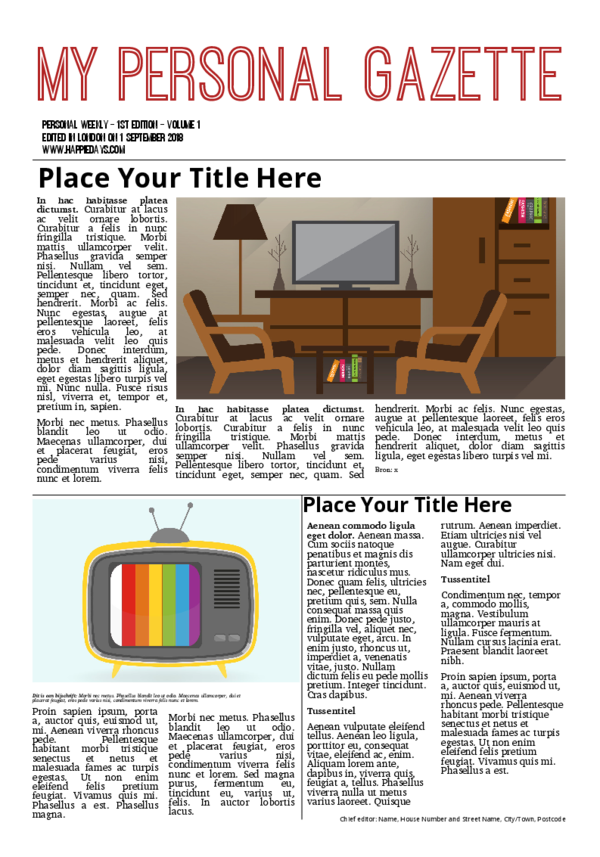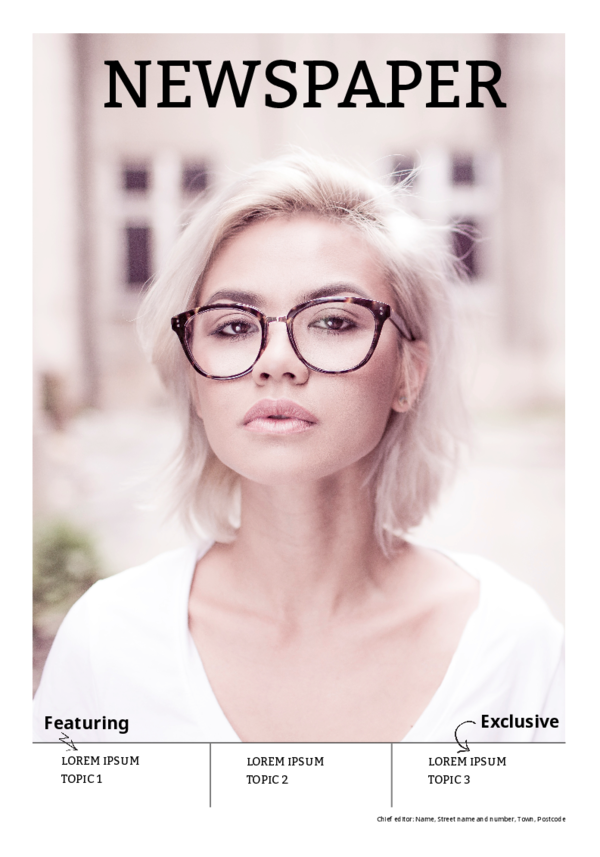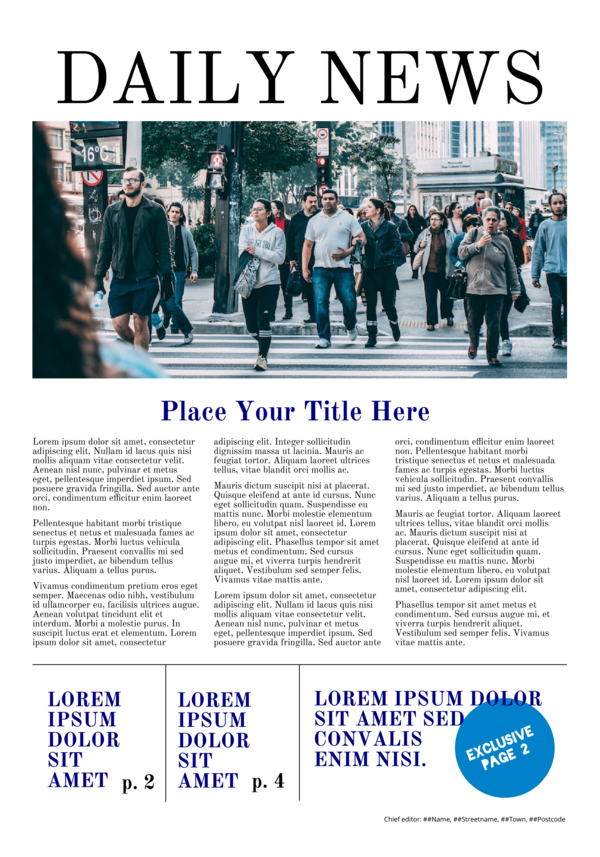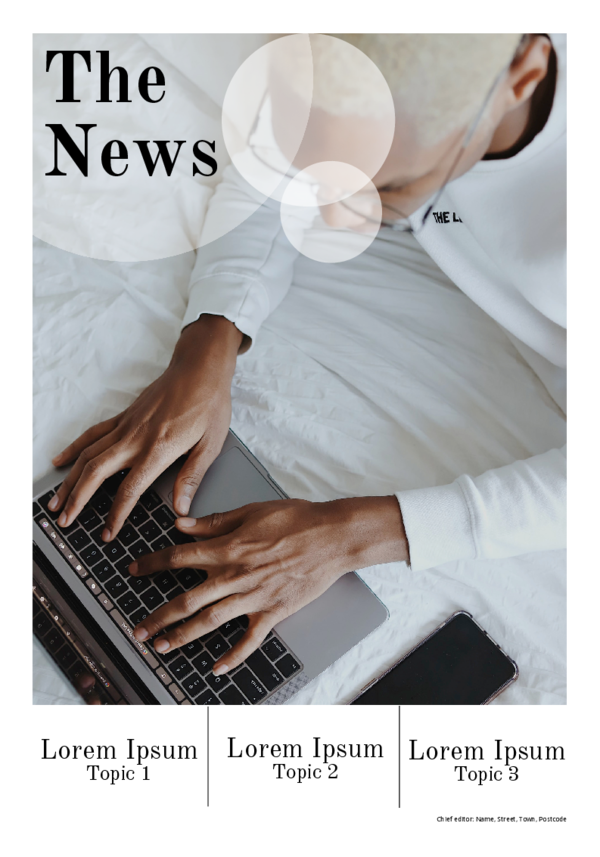Lesson plan & templates: Why a school newspaper is the perfect class project
Create your own personalised newspaper with the help of our newspaper templates and web tool. Creating a classroom newspaper is a fun and engaging class project for your students. And writing great news articles is just the first step. Using our newspaper templates and web tool, students can pour their articles into a printed newspaper with a professional look & feel! Create an account for free and get started straight away!
Produce your own class newspaper
Class newspaper can be a great didactic teaching method that actively involves students in the teaching process. It’s motivating. It’s engaging. It puts things into context.
And newspapers are an especially useful tool for language students. For foreign language students, a newspaper can be a great way to discover new words, new phrases, new ideas and new ideas. Whereas for first language students, it can be a fun and playful way to develop new comprehension, reading and writing skills.
But class newspapers can also be a handy resource for other teachers, including history, graphic design, computer science, photography and more. It allows your students to process the subject matter in an active and more meaningful way. All while developing important new academic, social and digital skills.
Here’s how to use newspapers in a class project for your lesson:
Lesson plan:
Preliminary discussions: The role of newspapers in our lives
Collect several copies of newspapers to pass around in class. Explain to the students that they will explore a newspaper, paying attention to the content, layout and format. Have students share their observations while delving deeper into the format of a newspaper:
- Level 1: Do you read newspapers? Why do you read them? How often are newspapers published? Which newspapers do you read and why? What news do they report on? Do you believe everything you read in the newspaper? Do you think newspapers will die out with news on the internet? What is the role of journalist? How do newspapers make money?
- Level 2: What are the different types of sections of a newspaper (news, weather, opinion piece, letters to the editor, classifieds, editorial, reviews, sport)? How can each section be defined? How do they differ in style and composition? Where are they typically found in a newspaper? How are sources referenced? Are these credible?
- Level 3: What are the identifiable features of a news article (title, headlines, pictures or graphics, captions, date, subtitles, table of contents/index, etc.)? How does a news article differ from an essay? Can students identify the 5 W’s (Who, What, Where, When, Why) in each article? How is information presented (objective, to-the-point, active voice, short sentences)?
Get started: Write your own newspaper articles
Now it’s your turn! Divide the class into small groups and ask them to take on different roles to produce their own school newspaper. Together, the students will form the ‘editorial staff’ consisting of journalists, editors, photographers and designers.
Have students brainstorm on the type of newspaper they want to make. Will it be a newspaper about a certain the curriculum? About current affairs? About school? About friends and families? The basic principles of a newspaper are all the same, so allow students to be as creative as they want.
Once you’ve decided, have the groups decide who will write which stories. Make sure your classroom newspaper will contain as many of the traditional sections as possible.
Next, have students gather the necessary information for their newspaper articles. This lay include conducting interviews, consulting the internet, collecting visual material…
After allowing them enough time to delve into their topics, have students will select the most important information and place this into a first draft of their article. They should not worry about font, size, or columns at this point. These drafts can then be edited by two other members of the editorial staff.
Finishing touches: Design your paper online
When you’ve completed the final story revisions, it’s time to start the newspaper layout. Using the web tool and templates from Happiedays, the editorial staff can work together to complete create an authentic classroom newspaper online. Sign up for free and watch a short demo on how this online editing tool works.
Next, have students insert their articles in text blocks and play around with a traditional newspaper layout (fonts, columns, headlines, pictures, captions, quotes…). Happiedays even has several templates to choose from to help your students jump-start the creative process. You can also opt for a blank template if you want to start from scratch. Encourage your students to experiment and be creative.
Once the pages are completed, you can go ahead and order a hard copy of your classroom paper. The newspapers are printed in tabloid format and real newsprint to give your newspaper that authentic look and feel. You can order your newspaper starting from just a single copy. Imagine the look of pride on your students’ faces when they get to flick through their very own newspaper!
Distribute the class newspaper to the students and allow them time to read it. When they've finished, take time to discuss the process and acknowledge everything they’ve learnt.
Learning objectives:
Writing skills:
- Identify and define the parts of a newspaper
- Identify the format of a news article
- Write a newspaper story
- Edit newspaper articles
- Layout and publish a classroom newspaper
Digital skills:
- Discover and employ a new online web tool
- Analyse the credibility of online sources and references
- Analyse and evaluate online/published information/news
- Look up information and visual material
Social skills:
- Take an interest in current affairs
- Develop media literacy
- Develop critical thinking skills
- Work together: discuss, confer, consult, lead, delegate
Case study: Thornhill Primary School
Thornhill Primary School in London has put its pupils to work! After a long and challenging pandemic year, these classmates got to roll up their sleeves a finale time this school year for the very first edition of the ‘Thornhill Voice’.
Every child in the school contributed to the newspaper with articles, poetry, puzzles, drawings, quizzes or letters.
Everything was brought together in an impressive and professional school newspaper.
These mini-journalists were amazed at the final product and are already dreaming about a second edition!
"It looks like a real newspaper! It's proper!" squealed Lillian in Year 2.
"Look! There's my writing! I'm in it!" exclaimed Jacob in Year 4.
"Are we going to have a new issue coming out next year?" asked Alex in Year 6.





